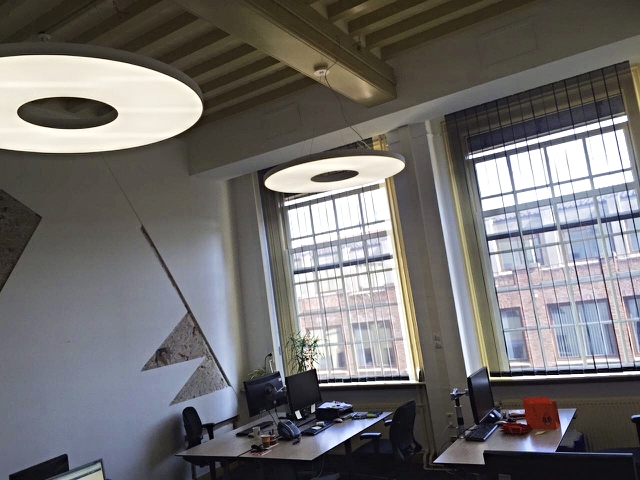Het Stadhuis van Alkmaar is heden, 11 april 2015, voorzien van 2 geoptimaliseerde werkruimtes door:
- iNflector voor de ramen te plaatsen waardoor warmte of koude en UV straling voor meer dan 80% wordt buitengehouden maar met behoud van het uitzicht
- AlBat technologie te plaatsen voor de optimalisatie van de akoestiek in de ruimte
- Lexl voor de 'Led' verlichting te installeren voor een goed uitgelichte werkplek welke ook nog dimbaar is
Met dank aan het Stadhuis te Alkmaar
welke hiermee het voorbeeld geeft hoe je de werkplek / ruimte kan optimaliseren en zo een betere werksfeer creëert op de duurzaamste manier voor werknemers.
Quote op Linkedin:
Jeeeeh! Club Pellikaan is wederom landelijk winnaar in de Fitnessclub van het Jaar Verkiezing 2014/2015 categorie medium keten (tot 19 vestigingen). Met de promotie (stem en maak kans op een ballonvaart) wonnen we ook een creativiteitsaward. Wij zijn trots en hadden natuurlijk nooit gewonnen zonder jullie stem. Bedankt!
Quote Telegraaf vandaag:
ma 02 feb 2015, 20:36
Acht huizen ontruimd door CO-vergiftiging
ROTTERDAM -
In de Rotterdamse Gerdesiastraat zijn acht huizen ontruimd door een koolmonoxidevergiftiging. Een persoon moest naar het ziekenhuis, acht mensen werden ter plekke medisch onderzocht. De bewoners kunnen maandag niet meer terug naar huis, voor hen is opvang geregeld. Dat heeft de veiligheidsregio Rotterdam-Rijnmond maandag gemeld op de website Rijnmondveilig.nl.
In alle portiekwoningen is koolmonoxide gemeten. Daarom zijn alle kachels in het portiek afgesloten.
A team of researchers at Michigan State University has developed a new type of solar concentrator that when placed over a window creates solar energy while allowing people to actually see through the window.
It is called a transparent luminescent solar concentrator and can be used on buildings, cell phones and any other device that has a clear surface.
And, according to Richard Lunt of MSU’s College of Engineering, the key word is “transparent.”
Research in the production of energy from solar cells placed around luminescent plastic-like materials is not new. These past efforts, however, have yielded poor results – the energy production was inefficient and the materials were highly colored.
“No one wants to sit behind colored glass,” said Lunt, an assistant professor of chemical engineering and materials science. “It makes for a very colorful environment, like working in a disco. We take an approach where we actually make the luminescent active layer itself transparent.”
The solar harvesting system uses small organic molecules developed by Lunt and his team to absorb specific nonvisible wavelengths of sunlight.
“We can tune these materials to pick up just the ultraviolet and the near infrared wavelengths that then ‘glow’ at another wavelength in the infrared,” he said.
The “glowing” infrared light is guided to the edge of the plastic where it is converted to electricity by thin strips of photovoltaic solar cells.
“Because the materials do not absorb or emit light in the visible spectrum, they look exceptionally transparent to the human eye,” Lunt said.


